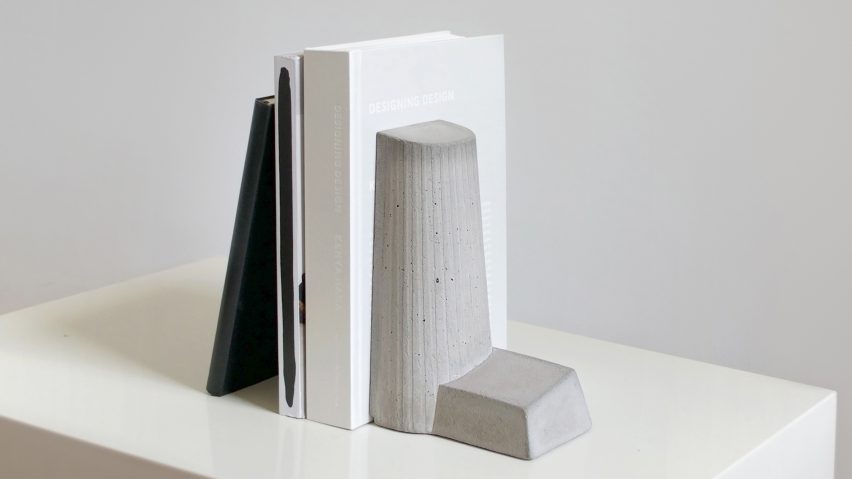This collection of decorative concrete objects by London designer Liliana Ovalle, created for an exhibition at Schloss Hollenegg, borrows architectural details from brutalist buildings.
The range includes four pieces based on structures associated with brutalism – one of the 20th century's most controversial architecture movements.
Buildings by the likes of Lina Bo Bardi, Felix Candela and Louis Kahn are each referenced, as well as Le Corbusier's La Cité Radieuse in Marseilles.
The apartment complex in the French city was one of the architect's first experimental developments created in Europe, and Ovalle looked to its sculptural terrace roof when creating her small concrete shapes.
"I guess that after nearly 70 years we are looking at Brutalism retrospectively," said Ovalle. "We have seen buildings from that era age, persist and decay."
"They embody many of the premises of modernism, sometimes in an overly confident way and that can be captivating to look back."
Brutalism's etymology comes from the French term béton-brut, which translates literally to "raw concrete". Inspired by this, the designer opted to make her pieces in the same material.
"Concrete not only transformed architecture in the 20th century, but it is also very present in self-construction," she told Dezeen. "I was interested in exploring its qualities at a small scale."
Ovalle used disposable cups and buckets to create prototype sculptures made of different shapes and textures, before casting them by hand.
Designed to be purposefully "ambiguous", the taller pieces could function as bookends or doorstops, while another piece has a smooth recess that could be used as a container.
"The objects have certain features that suggest possible purposes," Ovalle told Dezeen. "Their use and shape are open to interpretation."
Recent years have seen a surge in interest in brutalism, with the movement inspiring everything from Lego recreations to a textile collection.
The En Concrete collection was designed for the Slow exhibition of work by designers taking part in the Schloss Hollenegg for Design residency, which brought together work intended to encourage people to be "blissfully slow".

